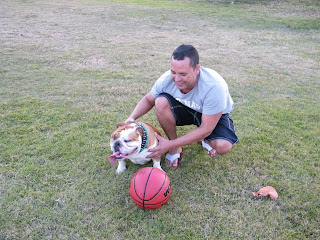Dog shedding is a natural process in canines; however it causes problems for owners: allergies and cleanliness issues. All dogs shed, even if some breeds tend to shed more than others. Dog shedding can be controlled by following a few easy tips.
1. Brushing
Brushing your dog on a regular basis is a great way to manage dog shedding. While brushing, you will be able to remove all the loose fur and the hair won’t end up in your home or on your clothes.
Choose brushes that are suitable for your dog’s coat type and length. Using the wrong type of brush may pull out your dog’s hair and cause injuries.
Short haired dogs need less brushing, while long and wiry coated dogs will need brushing at least once per day.
once per day.
2. Bathing
Bathing is another way to control your dog’s shedding. A clean coat and skin means less shedding. In addition, while bathing your dog, you may also remove the loose hair.
Some breeds require less baths (i.e. once every two months), however most dogs can be bathed on a regular basis.
Dogs need more frequent baths during the summer. You can bathe your dog once per week and this will moisten the dog’s skin and prevent dryness. Dry skin means more shedding. You may also use some gentle shampoos that will nourish the dog’s skin and reduce shedding.
3. Diet
Your dog’s diet can also contribute to the amount of shedding. A dog with a poor diet will shed more. Try to feed your dog a balanced diet rich in protein, fat, fibers and less carbs. Talk to your vet for more dietary recommendations.
4. Supplements
If your dog’s diet is poor in nutrients, some supplements may be required to get a healthy coat and reduce shedding. Fatty oils are important for a healthy coat and a hydrated skin. Fatty acid supplements will provide the necessary nutrients for your dog’s skin and coat and will reduce shedding.
5. Flea and Tick Control
Ticks and fleas and other parasites may cause a lot of uneasiness. Dogs will tend to scratch and this may lead to excessive shedding and even bald patches. Fleas and ticks may be removed with
insecticides and special formula shampoos. Make sure you get rid of all the fleas and ticks in your home to prevent re-infection. 6. Manage Stress
A stressed dog may lose more hair than usual. Stress in dogs may be caused by environmental changes, the loss of someone in the family or a fellow pet, a new baby or a new pet or health conditions. Managing stress may solve the problem and reduce shedding. Identify the source of your pet’s stress and try to handle it with affection, therapy or even medication. Talk to your vet for more options.
If you notice that your dog is shedding excessively, it is a good idea to visit the vet to rule out any medical condition that may cause shedding. Common diseases that cause shedding are: skin problems, the ringworm, mange or cancer. The shedding is abnormal is your dog has bald patches.
How to choose a dog.
11 years ago









3 comments:
It's such a good post for our pets. I have a dog, named Bailey. Few days ago, he is troubled with ear infection. Then I went to a veterinary hospital. During physical exam a growth was discovered. This growth was inhibiting his air intake. Within an hour, surgery was performed and Bailey was breathing normally. Ear Infections in Dogs
Starting a mobile pet grooming business requires knowledge of grooming dogs and operating a company. It would not be smart to jump into this idea without a plan of attack. It would probably turn out blowing up in your face somewhere during the process.
Toronto Dog Groomer
Grooming your dog can also be a good way to make a strong relationship with your dog, and it's important to get him used to it from an early age. Many dogs learn to see their routine brushing as an alternate petting, another source of affection and attention. A good quality brush and comb will help you with your dog's coat, but also remember that your dog's eyes, ears, and nails require attention as well.
Dog Grooming
Post a Comment